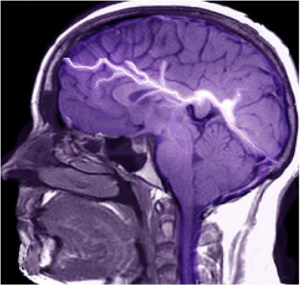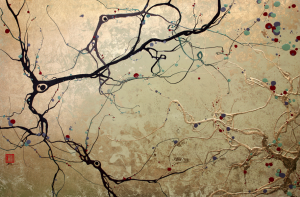 For many years, it was thought that new brain cells could not develop in adulthood and that the connections between nerves were fairly static after childhood. This was primarily because it wasn’t possible to see the microscopic details of changes that occurred inside and between neurons. Also, since many brain-injured patients did not fully recover, the idea of an adult brain that could grow new cells or develop new neuronal pathways was not seriously considered.
For many years, it was thought that new brain cells could not develop in adulthood and that the connections between nerves were fairly static after childhood. This was primarily because it wasn’t possible to see the microscopic details of changes that occurred inside and between neurons. Also, since many brain-injured patients did not fully recover, the idea of an adult brain that could grow new cells or develop new neuronal pathways was not seriously considered.
The Brain Is Not Static
However, researchers from the 1960’s to the 1990’s began to see evidence of radical changes in the brain circuits of animals that had had motor nerves cut. After a while it became obvious that these primates’ brains reorganized to allow the use of previously disabled limbs. Later on, experiments done with stroke patients, where the good arm was tied down, showed they could regain use of a disabled arm by developing new neuronal pathways in the brain.
 Neuroplasticity is the word for this ability of the brain to change. Before the recent era any discussion of neuroplasticity was rejected. It has now become clear that changes in our neurons, both in the grey and white matter of the brain, are constantly occurring. In the regions of smell and memory, new cells are created and integrated into existing brain circuits throughout life. In addition to new cells being created, the synapses between neurons are rapidly changing throughout life, being built up or torn down each night as we sleep. Measurements now can actually be made of the changes in the size of different brain regions that result from mental effort, meditation, medications, diet and habits. Abstract skill learning has been shown to be dependent upon neuroplasticity in the corticostriatal region. It has become apparent that mental effort of various kinds triggers DNA mechanisms and the other machinery of the cell to build new bridges, circuits, and networks, as well as to actually create new neurons.
Neuroplasticity is the word for this ability of the brain to change. Before the recent era any discussion of neuroplasticity was rejected. It has now become clear that changes in our neurons, both in the grey and white matter of the brain, are constantly occurring. In the regions of smell and memory, new cells are created and integrated into existing brain circuits throughout life. In addition to new cells being created, the synapses between neurons are rapidly changing throughout life, being built up or torn down each night as we sleep. Measurements now can actually be made of the changes in the size of different brain regions that result from mental effort, meditation, medications, diet and habits. Abstract skill learning has been shown to be dependent upon neuroplasticity in the corticostriatal region. It has become apparent that mental effort of various kinds triggers DNA mechanisms and the other machinery of the cell to build new bridges, circuits, and networks, as well as to actually create new neurons.
Much More Active Brain Changes
Very recent advances in research show an even more active brain than was imagined even several years ago with constant building and eliminating of synapses. One study, using two photon microscopy, was able to observe glia cells tapping synapses each hour for five minutes in active surveillance. Those synapses that were not functioning were eliminated. Another imaging study showed microglia active in building and pruning synapses. Other studies show that neurons are actively able to alter their neurotransmitters with changing circumstances. Zuo showed that with learning new connections between cells emerged rapidly with dendritic spines often forming spatial clusters near other connections.
 Perhaps the most dramatic very recent information is about the incorporation of new cells in the dentate gyrus of the hippocampus, the center of memory and other cognitive processes. While it has been thought that new neurons are used for new learning, a study recently demonstrated that these new immature neurons are more likely to respond to incoming information and are critical to memory function. But, perhaps, the most exciting recent research by T. Nakashiba shows that the new neurons from neurogenesis in the hippocampus have a distinct function as compared with the older neurons. A form of memory called ‘pattern separation‘ forms distinct new memories based upon specific differences such as remembering by comparing the difference between two different cars. This requires new neurons. ‘Pattern completion‘ is a form of memory that is based upon detecting specific similarities, such as remembering which car a friend was driving. This type of memory requires the old neurons. There is also evidence that the newer cells have more widespread connections than the older cells.
Perhaps the most dramatic very recent information is about the incorporation of new cells in the dentate gyrus of the hippocampus, the center of memory and other cognitive processes. While it has been thought that new neurons are used for new learning, a study recently demonstrated that these new immature neurons are more likely to respond to incoming information and are critical to memory function. But, perhaps, the most exciting recent research by T. Nakashiba shows that the new neurons from neurogenesis in the hippocampus have a distinct function as compared with the older neurons. A form of memory called ‘pattern separation‘ forms distinct new memories based upon specific differences such as remembering by comparing the difference between two different cars. This requires new neurons. ‘Pattern completion‘ is a form of memory that is based upon detecting specific similarities, such as remembering which car a friend was driving. This type of memory requires the old neurons. There is also evidence that the newer cells have more widespread connections than the older cells.
 Neurogenesis is stimulated by many factors including enriched environments, exercise, and neural factors such as BDNF (one of BDNF’s many varied effects in different brain regions). The mechanism of antidepressants and other psychotropics have been shown to be pathways that stimulate BDNF and new cells in the hippocampus. Current research into antidepressant treatment is focused on mechanisms of neurogenesis.
Neurogenesis is stimulated by many factors including enriched environments, exercise, and neural factors such as BDNF (one of BDNF’s many varied effects in different brain regions). The mechanism of antidepressants and other psychotropics have been shown to be pathways that stimulate BDNF and new cells in the hippocampus. Current research into antidepressant treatment is focused on mechanisms of neurogenesis.
Neuroplasticity Can be Positive and Negative
There are some downsides of neuroplasticity. It appears that negative behaviors, including bad habits, addictions, tics, etc., can also cause the brain to be rewired, in ways that are not desirable. Chronic pain can be due to neuroplastic change where the nerves develop a fixed pathway for pain. Another example of a neuroplastic change is the disturbing symptom of hearing unusual sounds, called tinnitus.
New Therapies
 There are many examples of therapies and rehabilitation taking advantage of the brain’s capacity for neuroplasticity to bring about positive changes in hearing, vision, movement, and psychiatric symptoms. A brilliant use of visual cues was developed to diminish phantom limb pain by fooling the brain, through the use of a mirror, into thinking that the missing limb is still there and can be moved in such a way as to reduce the pain.
There are many examples of therapies and rehabilitation taking advantage of the brain’s capacity for neuroplasticity to bring about positive changes in hearing, vision, movement, and psychiatric symptoms. A brilliant use of visual cues was developed to diminish phantom limb pain by fooling the brain, through the use of a mirror, into thinking that the missing limb is still there and can be moved in such a way as to reduce the pain.
Culture and Neuroplasticity
 Increasingly we are observing a wide variety of neuroplastic changes in the brain. Cultural differences can even trigger these dramatic effects on brain structure. One example is seen in island dwellers near Burma. They live on the sea, and learn to swim in deep water to catch clams and find pearls. Through neuroplastic changes in the visual centers of the brain, they have developed the remarkable ability to see clearly under deep water.
Increasingly we are observing a wide variety of neuroplastic changes in the brain. Cultural differences can even trigger these dramatic effects on brain structure. One example is seen in island dwellers near Burma. They live on the sea, and learn to swim in deep water to catch clams and find pearls. Through neuroplastic changes in the visual centers of the brain, they have developed the remarkable ability to see clearly under deep water.
Mental activity causes constant changes in the brain. An important question is how thought or attention can influence these changes, and another is whether this mentally stimulated neuroplasticity can be used to help treat illness.